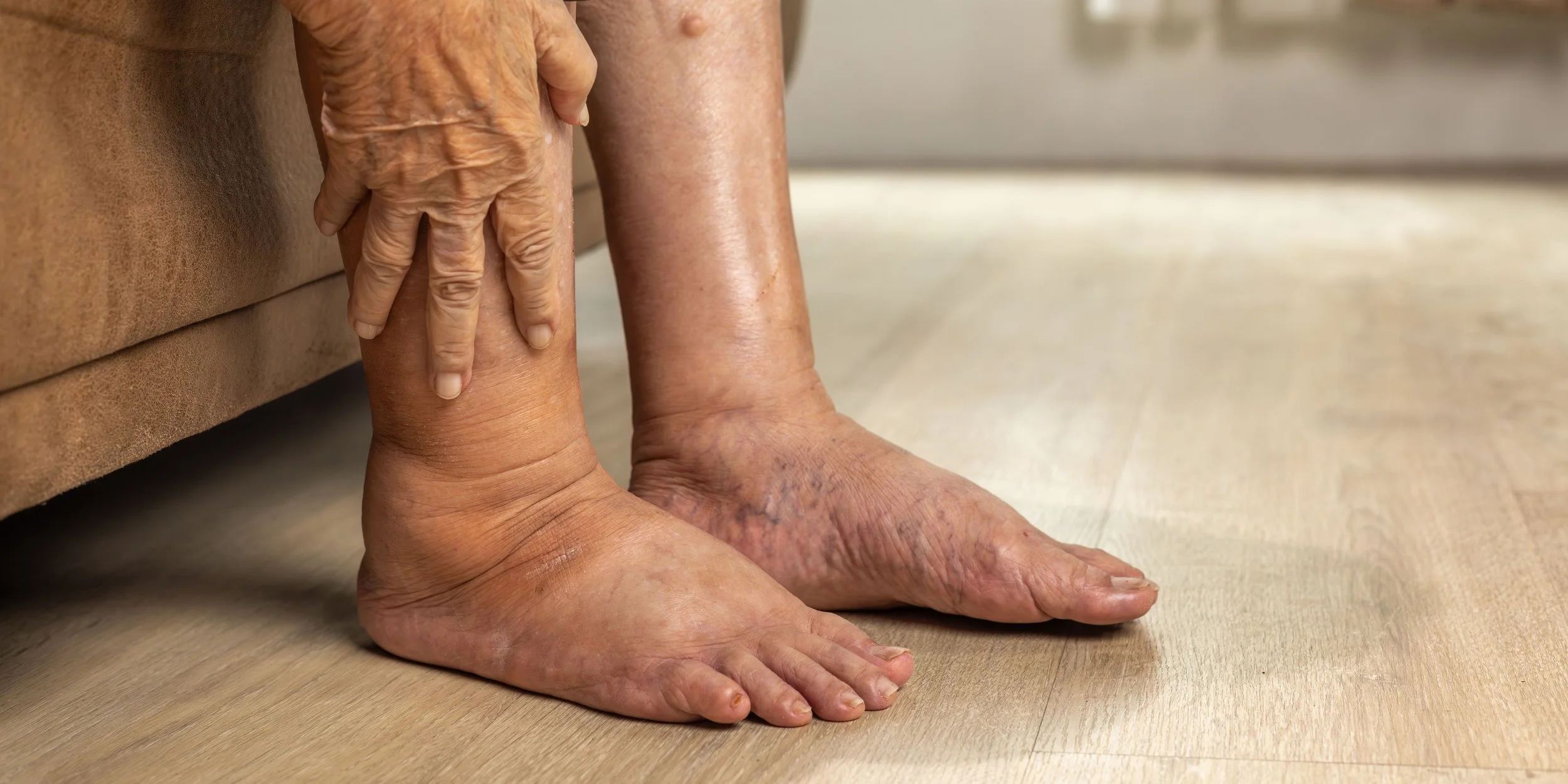When Foot Wounds Turn Serious: Is a Diabetic Foot Ulcer Life-Threatening?
For most people, a small cut or blister on the foot is nothing more than a minor inconvenience. But for individuals with diabetes, a foot wound can quickly escalate into a serious, life-threatening problem. Diabetic foot ulcers (DFUs) are among the most severe complications of diabetes, affecting up to 15% of diabetic patients during their lifetime.
A diabetic foot ulcer isn’t just a sore that won’t heal—it can become the gateway to infection, gangrene, hospitalization, or even amputation if not addressed early and aggressively.
In this blog, we’ll explore the critical reasons why diabetic foot ulcers can become life-threatening, the warning signs to watch for, and how to manage and prevent this dangerous condition. If you or someone you love has diabetes, this is information you can’t afford to ignore.
Why Diabetic Feet Need Special Care
Foot wounds may seem like a minor inconvenience for most people, but for someone with diabetes, they can herald a much more serious condition: diabetic foot ulcers.
These ulcers are open sores that most often occur on the bottom of the foot. They develop because of two major diabetes-related complications:
Neuropathy (nerve damage) – which reduces sensation in the feet, so you may not feel small injuries.
Poor circulation – which slows the healing process, making minor cuts and blisters susceptible to infection.
According to the American Podiatric Medical Association, up to 15% of diabetic patients will develop a foot ulcer at some point in their lives. These wounds are not just painful or inconvenient—they can become life-threatening if not treated promptly and effectively. In fact, diabetic foot ulcers are a leading cause of lower-limb amputations worldwide.
Why Are They Dangerous?
Left untreated, a diabetic foot ulcer can lead to:
Severe infections like cellulitis, abscesses, or bone infections (osteomyelitis)
Tissue death (gangrene)
Amputation of toes, part of the foot, or the entire limb
Sepsis, a potentially fatal body-wide infection
In fact, according to the American Podiatric Medical Association, diabetic foot ulcers precede 85% of diabetes-related amputations.
The Life-Threatening Risks of Diabetic Foot Ulcers
1. Infection
When the skin barrier is broken, bacteria can easily enter the wound. For someone with diabetes, the immune system is often weakened, making it harder to fight infections. An untreated infected ulcer can spread rapidly, sometimes requiring emergency hospitalization.
Infections may involve:
Skin (cellulitis)
Deep tissues
Bones (osteomyelitis)
Joints (septic arthritis)
2. Amputation
If the infection cannot be controlled or if tissue damage is too severe, amputation may become the only option to prevent further spread. Losing part of the foot or leg is not only physically disabling but also linked to higher mortality rates in diabetic patients.
3. Sepsis
If bacteria from an infected ulcer enter the bloodstream, it can cause sepsis, a life-threatening condition that can lead to organ failure or death. Sepsis requires immediate medical attention.
4. Impact on Quality of Life
Even when not life-threatening, foot ulcers can lead to:
Chronic pain
Limited mobility
Depression or anxiety
Increased healthcare costs
Why Diabetic Foot Wounds Escalate Quickly
The Role of Neuropathy
Diabetic neuropathy reduces the ability to feel pain, heat, or injury. This means:
Blisters, cuts, or pressure sores often go unnoticed
People may continue walking on an injured foot, worsening the damage
The Role of Poor Circulation
Peripheral arterial disease (PAD) reduces blood flow to the feet. Poor circulation:
Slows healing
Increases the risk of infection
Limits delivery of antibiotics and oxygen to tissues
Immune System Challenges
Diabetes weakens immune function, making it harder to:
Fight infections
Clear bacteria from wounds
Heal wounds effectively
How to Prevent Diabetic Foot Ulcers
1. Daily Foot Inspections
Look for:
Cuts or scratches
Blisters or sores
Redness or swelling
Changes in skin color
Ingrown toenails or fungal infections
Use a mirror or ask a loved one to help check the bottoms of your feet.
2. Proper Foot Hygiene
Wash feet daily with warm (not hot) water
Dry thoroughly, especially between the toes
Apply moisturizer (but avoid between the toes)
Keep toenails trimmed straight across
3. Choose the Right Footwear
Wear well-fitted, supportive shoes
Avoid walking barefoot
Use diabetic socks that reduce friction and wick away moisture
Consider custom orthotics or diabetic shoes prescribed by a podiatrist
4. Control Blood Sugar
Good glucose management helps:
Improve wound healing
Reduce infection risk
Prevent further nerve damage
What to Do If You Have a Foot Wound
If you notice a cut, sore, or ulcer:
Don’t:
Ignore it
Try home remedies like hydrogen peroxide or harsh antiseptics
Pick at scabs or calluses
Delay treatment
Do:
Clean the wound gently with saline or mild soap and water
Keep it covered with a sterile dressing
Contact your healthcare provider or podiatrist immediately
Early treatment saves lives and limbs.
How Are Diabetic Foot Ulcers Treated?
Treatment depends on the severity of the ulcer but may include:
1. Wound Care
Debridement (removing dead tissue)
Specialized dressings or wound products
Moist wound healing techniques
2. Infection Control
Topical or oral antibiotics
Hospitalization for IV antibiotics in severe cases
Surgical intervention if necessary
3. Offloading Pressure
Use of special shoes, casts, or braces to relieve pressure on the wound
Avoid walking on the ulcerated area whenever possible
4. Surgical Care
Drainage of abscesses
Removal of infected bone or tissue
Amputation in extreme cases to prevent life-threatening infection
5. Advanced Therapies
Skin grafts
Hyperbaric oxygen therapy
Negative pressure wound therapy (wound vac)
The Role of Podiatrists in Diabetic Foot Care
Seeing a podiatrist regularly is essential if you have diabetes. A podiatrist can:
Check for early signs of ulcers or other foot problems
Provide custom footwear recommendations
Perform debridement to promote healing
Monitor wound progress and prevent complications
Mental and Emotional Impact of Foot Ulcers
Living with a diabetic foot ulcer can be stressful and emotionally draining. Many patients experience:
Depression and anxiety
Fear of losing mobility or independence
Frustration over slow healing
Getting support from healthcare providers, counselors, or diabetes support groups can help you cope with the emotional side of this condition.
Conclusion: Don’t Ignore a Foot Wound—It Could Save Your Life
A diabetic foot ulcer is far more than “just a sore.” It’s a serious medical condition that can lead to infection, amputation, or even death if not treated properly. However, with early intervention, proper foot care, and regular medical attention, you can prevent these dangerous outcomes.
If you have diabetes, make foot care a daily priority:
Inspect your feet every day
Manage your blood sugar
See a podiatrist regularly
Seek immediate care for any wounds, no matter how small
Remember: The best way to avoid life-threatening foot complications is to catch problems early and act fast.
Take Action Today
If you or someone you love has a diabetic foot wound, don’t wait. Schedule an appointment with a podiatrist or foot care specialist today. Early treatment can mean the difference between healing and hospitalization—or between life and death.











